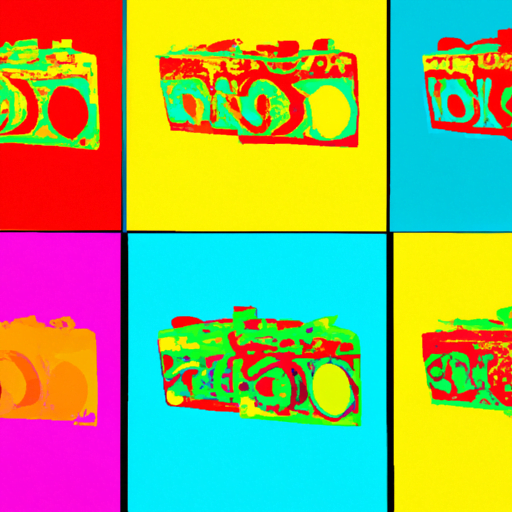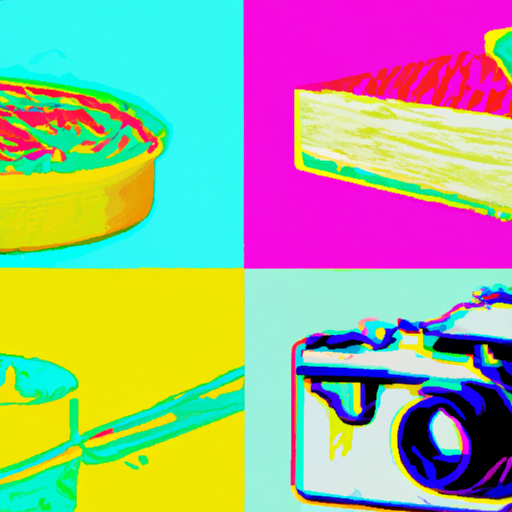
-
Table of Contents
- Exploring Generative Design in Graphic Design Projects
- What is Generative Design?
- The Benefits of Generative Design in Graphic Design Projects
- Examples of Generative Design in Graphic Design
- 1. Logo Design
- 2. Packaging Design
- 3. Data Visualization
- Case Study: The New York Times
- The Future of Generative Design in Graphic Design
- Summary
Exploring Generative Design in Graphic Design Projects

Graphic design is an ever-evolving field that constantly seeks new ways to push boundaries and create visually stunning and impactful designs. One emerging trend in graphic design is the use of generative design techniques. Generative design is a process that involves using algorithms and computer programs to create unique and dynamic designs. In this article, we will explore the concept of generative design in graphic design projects, its benefits, and how it is being used by designers today.
What is Generative Design?
Generative design is a design approach that involves using algorithms, rules, and parameters to create designs that are not predetermined but rather evolve and adapt based on various inputs. It is a departure from traditional design methods that rely on manual creation and decision-making. With generative design, designers set the parameters and constraints, and the computer program generates multiple design variations based on those inputs.
Generative design is often associated with computational design and artificial intelligence. It allows designers to explore a vast number of design possibilities quickly and efficiently, enabling them to discover unique and unexpected solutions. By leveraging algorithms and automation, generative design can produce complex and intricate designs that would be challenging or time-consuming to create manually.
The Benefits of Generative Design in Graphic Design Projects
Generative design offers several benefits that make it an attractive approach for graphic designers:
- Exploration of Design Possibilities: Generative design allows designers to explore a wide range of design possibilities quickly. By generating multiple variations, designers can discover new ideas and solutions that they may not have considered otherwise.
- Efficiency and Time Savings: With generative design, designers can automate repetitive tasks and let the computer program handle the creation of multiple design iterations. This saves time and allows designers to focus on more creative and strategic aspects of the project.
- Unique and Customizable Designs: Generative design can produce designs that are unique and tailored to specific requirements. By adjusting the parameters and constraints, designers can create designs that meet specific criteria or reflect specific brand identities.
- Adaptability and Scalability: Generative design allows designs to adapt and evolve based on changing inputs or requirements. This makes it a valuable approach for projects that require scalability or frequent updates.
Examples of Generative Design in Graphic Design
Generative design is being used in various graphic design projects across different industries. Here are a few examples:
1. Logo Design
Generative design can be used to create unique and dynamic logos. By defining the parameters and constraints, designers can generate multiple logo variations that reflect the brand’s identity and values. For example, the logo for the 2012 Olympic Games in London was created using generative design techniques. The logo featured a dynamic and abstract design that represented the energy and diversity of the event.
2. Packaging Design
Generative design can also be applied to packaging design. By inputting parameters such as product dimensions, target audience, and brand attributes, designers can generate packaging designs that are not only visually appealing but also functional and efficient. Generative design can help designers explore different packaging structures and materials to find the most suitable solution.
3. Data Visualization
Generative design is particularly useful in data visualization projects. By using algorithms to process and represent data, designers can create visually engaging and informative visualizations. For example, the “Wind Map” project by Fernanda Viégas and Martin Wattenberg uses generative design to visualize wind patterns across the United States. The resulting visualization is a dynamic and interactive representation of complex data.
Case Study: The New York Times
The New York Times is one of the organizations that have embraced generative design in their graphic design projects. They have developed a tool called “Expressive Type” that uses generative design techniques to create unique and dynamic typography for their articles and headlines. The tool generates custom letterforms based on the content and context of the article, resulting in visually striking and engaging typography.
The use of generative design in typography allows The New York Times to create a visual identity that is constantly evolving and adapting to the content they publish. It adds a layer of dynamism and creativity to their design language, making their articles more visually appealing and memorable.
The Future of Generative Design in Graphic Design
Generative design is still a relatively new concept in graphic design, but its potential is vast. As technology continues to advance, we can expect to see more designers incorporating generative design techniques into their projects. With the rise of artificial intelligence and machine learning, generative design can become even more sophisticated and capable of producing highly personalized and context-aware designs.
Furthermore, generative design has the potential to revolutionize the design process itself. By automating certain aspects of design creation, designers can focus on more strategic and creative tasks. Generative design can also enable collaboration between designers and machines, allowing for a more iterative and exploratory design process.
Summary
Generative design is an exciting and innovative approach in graphic design that offers numerous benefits. It allows designers to explore a wide range of design possibilities quickly, saving time and increasing efficiency. Generative design can produce unique and customizable designs that adapt to changing inputs or requirements. It is being used in various graphic design projects, including logo design, packaging design, and data visualization. The New York Times is one of the organizations that have embraced generative design, using it to create dynamic and engaging typography. As technology advances, generative design has the potential to revolutionize the design process and enable more personalized and context-aware designs.
